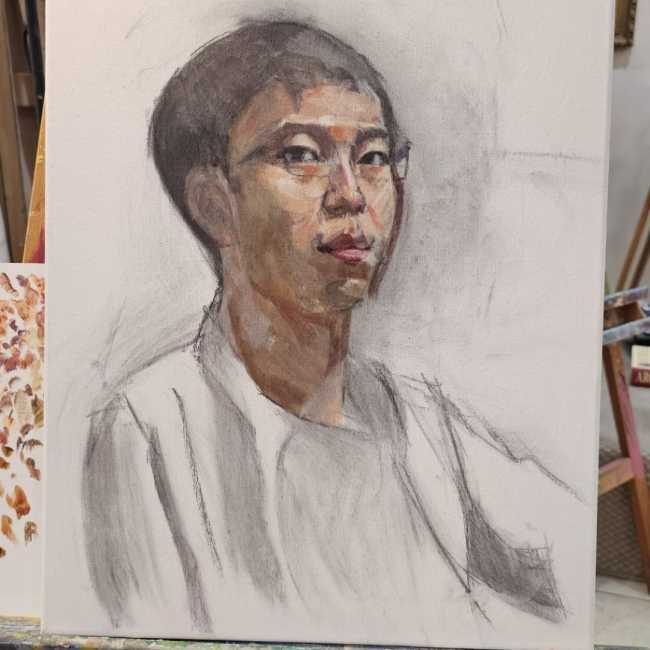Phone: (647) 894 7706

The art landscape is extremely diverse. From oil painting classes to basic sketching and drawing classes, the list goes on. One such art form of technique is known as stained painting, part of the broader spectrum of composition that also encompasses sketching, subject development and structuring. But what exactly is stained painting, and what are some of its features? These questions are the major focus of this blog.
As the name suggests, stained painting uses stains and washes to create beautiful two-dimensional paintings and artwork. This technique uses a thin form of paint on an unprimed canvas, that is, a canvas that is not coated with a primer. Using an unprimed canvas is key here as it allows the paint to be soaked into its layers, just like wood or a piece of clothing. This way, the paint becomes one with the canvas, already adding vibrancy and texture to the painting.
A stained painting class is quite different from an oil painting class as it does not involve working with a ground layer. The stained part already adds a layer of aesthetic to the artwork instead of a traditional, blank and primed canvas.
Since the painting is not properly varnished or primed, it gives it a rather coarse, matte finish. While it is part of its aesthetic appeal, it is quite challenging to maintain a stained painting as it can easily collect moisture and dust.
Stained painting is often associated with American pioneers of the colour field movement, Helen Frankenthaler and Morris Louis. Their works primarily featured the stained painting technique, giving rise to their unique style.
If you are looking to learn this technique, look no further than VR School of Art. As a leading drawing class in North York, we also offer drawing classes for kids and specialized classes including Impressionist Painting, Plein Air Painting, Life Model Painting and more. For more information, reach out to us at 647-894-7706 today.